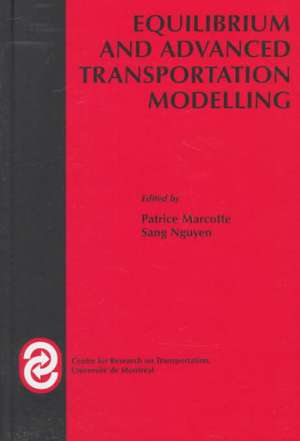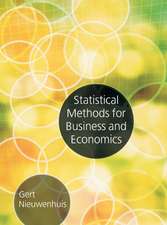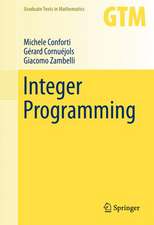Equilibrium and Advanced Transportation Modelling: Centre for Research on Transportation
Editat de P. Marcotte, Sang Nguyenen Limba Engleză Hardback – 30 iun 1998
| Toate formatele și edițiile | Preț | Express |
|---|---|---|
| Paperback (1) | 946.72 lei 43-57 zile | |
| Springer Us – 10 apr 2013 | 946.72 lei 43-57 zile | |
| Hardback (1) | 953.65 lei 43-57 zile | |
| Springer Us – 30 iun 1998 | 953.65 lei 43-57 zile |
Preț: 953.65 lei
Preț vechi: 1162.99 lei
-18% Nou
Puncte Express: 1430
Preț estimativ în valută:
182.48€ • 191.01$ • 151.88£
182.48€ • 191.01$ • 151.88£
Carte tipărită la comandă
Livrare economică 31 martie-14 aprilie
Preluare comenzi: 021 569.72.76
Specificații
ISBN-13: 9780792381624
ISBN-10: 0792381629
Pagini: 346
Ilustrații: XVI, 325 p.
Dimensiuni: 155 x 235 x 24 mm
Greutate: 0.68 kg
Ediția:1998
Editura: Springer Us
Colecția Springer
Seria Centre for Research on Transportation
Locul publicării:New York, NY, United States
ISBN-10: 0792381629
Pagini: 346
Ilustrații: XVI, 325 p.
Dimensiuni: 155 x 235 x 24 mm
Greutate: 0.68 kg
Ediția:1998
Editura: Springer Us
Colecția Springer
Seria Centre for Research on Transportation
Locul publicării:New York, NY, United States
Public țintă
ResearchCuprins
1 Parallelization of Microscopic Traffic Simulation for Att Systems Analysis.- 2 Activity Based Travel Demand Model Systems.- 3 Passenger Assignment in Congested Transit Networks: A Historical Perspective.- 4 Long-Term Advances in The State of The Art of Travel Forecasting Methods.- 5 Stochastic Assignment to Transportation Networks: Models and Algorithms.- 6 Solving Congestion Toll Pricing Models.- 7 Side Constrained Traffic Equilibrium Models — Traffic Management Through Link Tolls.- 8 Mult1Criteria Assignment Modeling: Making Explicit the Determinants of Mode or Path Choice.- 9 Hyperpath Formulations of Traffic Assignment Problems.- 10 Network Equilibria and Disequilibria.- 11 Shortest Path Algorithms in Transportation Models: Classical and Innovative Aspects.- Bilevel and other Modelling Approaches to Urban Traffic Management and Control.- Appendix: 1. Partners and General Approach in the MUSIC Project.- Appendix: 2. Outline Justifications.- References.














